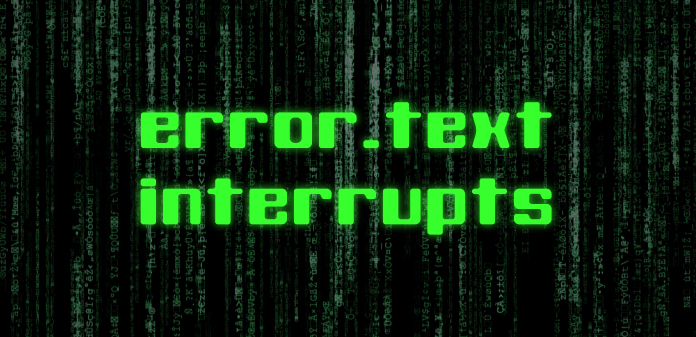Error.Text Interrupts

The Pattern Interrupt Technique
Sales professionals are sometimes trained to use a "Pattern Interrupt Technique." This technique distracts the person being targeted for a sale, by interrupting the behavioral patterns that person would use to reject the salesperson. When used correctly, this technique helps to break down the defensive barriers of the potential customer.
From a humanistic point of view (and as a consumer), the Pattern Interrupt Technique is a slippery slope. It's dangerous for a brand to leave a feeling of manipulation behind after a sales moment that doesn't close!
As a designer/developer, I assumed that sales-ish approaches like the Pattern Interrupt Technique would ever be relevant to my work... but I was totally wrong!
The Internet's Version
Although it took me a bit to see the forest through the trees, whenever a user is fills out a web page/app form incorrectly, there's a Pattern Interrupt moment hidden in the user experience!
I experienced this moment myself, after submitting some form data on a site I built. When the server brought me back to the same page, and informed me of my errors, my mental flow was completely interrupted. Then I realized the psychological/emotional feeling inside me at that moment was definitaly the Pattern Interrupt Technique in action.
Except in this case, it wasn't a salesperson doing the interrupting. It was the program! And just like a salesperson, this program had completely thrown off my mental "map" of what I was supposed to do next!
Error Text: The Net's Pattern Interrupt Mechanism
What I didn't understand until that moment, was that no user expects to be mistaken when filling out a web form. I mean, we all do it. We all type stuff into those input boxes. We all squint at the results of our keystrokes. And we never mean to enter anything wrong.
Yet when we submit form data incorrectly, our mental journey is completely interrupted, and we don't get to move forward. We were psychologically primed and ready for the reward of our typed efforts, but we didn't get the expected result we envisioned.
Instead we get something like this:
Or worse, something like this:
This is not good business. This would never happen in the analog world. Here's an analogy to explain why:
Let's say someone walks up to you in a parking lot. That person asks you, "Hey, what's your name, friend?"
When you answer, you simply respond, "My name is [your name]."
Then this complete stranger pulls out a sign with big red letters: ERROR! WHAT IS YOUR FULL NAME?
Would you want to keep talking to that person? More importantly, would you want to give them your hard-earned money after that experience?
So why do we do that with our web sites/apps? Our web sites/apps are that complete stranger. But our sites/apps have no face, no parking lot, and no sign... instead our sites/apps provide on-screen error text.
Which got me thinking...
The Positive Pattern Interrupt
There's a missed opportunity in this sort of experience. If we simply change our thinking a tiny bit, we find perfect opportunity to connect with our users through our brand voice. Instead of being harsh, negative and programmatic... we could be colloquial, friendly and positively reinforcing!
So let's go back to that first example. Instead of this cold-hearted response to a user's efforts:
A site geared towards tween girls could say:
Or a site geared towards surfers could say:
Or a site for financial professionals could say:
The Possibilities
The possibilities of what can be communicated are only limited by your brand's voice! Additionally, this sort of colloquial approach, adds a sense of humanity and compassion to the exact emotional state a user would be experiencing at that moment.
The possibilites for modern web sites and applications, that interact with your users by simulating positive/constructive customer service... are truly endless. And it all starts with the same humble forms we've been building for years, along with a little knowledge of the Pattern Interrupt Technique.
I'd encourage everyone to design and program more into the displayed error text in your web sites and apps. I've had tremendous success with the approach, and as always if you have any questions - please let me know!
U P D A T E D